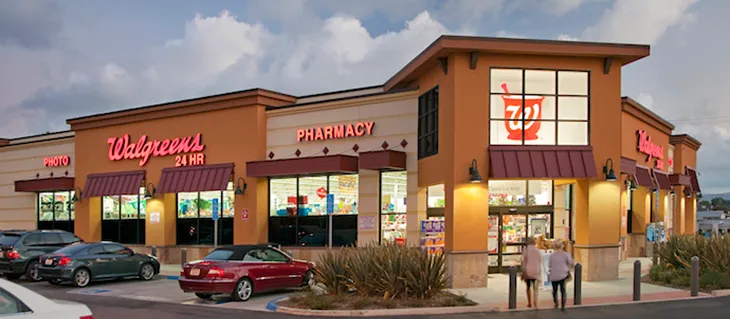In recent decades, pharmacy benefit managers have grown into shadowy and hugely influential players in the prescription drug supply chain. For the most part, they have managed to avoid public scrutiny and government regulation.

Lisa Joldersma
Fortunately, that’s starting to change, as policy makers find it difficult to overlook rampant conflicts of interest at the core of the typical PBM’s business model — conflicts that too often increase drug costs for patients, employers and the broader health care system.
Insurers contract with PBMs to help determine which medicines will — and will not — be covered by a health plan. The PBM often establishes a list of covered drugs (known as a formulary) for the health plan, which governs what patients are charged at the pharmacy and may create hurdles, like prior authorization, for patients to overcome before receiving a prescribed medicine.
Just three companies — CVS Caremark, Express Scripts and OptumRx (a division of UnitedHealthcare) — controlled 80% of the market in 2021, compared to 48% in 2010. Each of these PBMs also either owns or is owned by a major insurance company and controls other key players in the prescription drug supply chain: pharmacies, mail order distributors and outpatient care sites, to name just a few.
All told, leading PBM and insurer conglomerates comprise some of the largest companies in the United States. The Big Three mentioned above all rank in the top 15 of the Fortune 500 list, and their combined average annual revenues are nearly four times greater than the combined average for the three largest pharmaceutical companies.
This consolidation means PBMs and insurers have enormous leverage to demand hefty discounts from biopharmaceutical firms. PBMs’ gatekeeping power helps explain why drug companies offered $236 billion in rebates, discounts and other price concessions in 2021 alone.
PBMs and the insurers they work for — not drug companies — decide how much patients are charged for medicines at the pharmacy. And these middlemen have become increasingly skilled at maximizing their profits and off-loading costs onto patients.
PBMs historically have kept as compensation a share of the total rebates and discounts they negotiated. Congressional investigators, researchers and other experts have noted that the “retained rebate” compensation model long favored by PBMs may lead them to prefer medicines with higher, nominal “list” prices over lower-priced alternatives because the higher prices allow for larger rebates. And while rebates and discounts do lower the final, net price an insurer pays for medicines, patients don’t typically enjoy the benefit of these savings at the pharmacy counter.
Insurers and PBMs typically force patients to pay the higher, list price of a medicine when in their deductible. They pretend the negotiated discounts don’t exist. The same is true for those with coinsurance, which requires patients to pay a percentage of their medicine’s cost. Once again, what patients pay is usually based on the full price of the medicines, not the lower negotiated price their insurer pays.
This questionable practice is largely unique to people who need prescription medicines. When a patient needs a surgery, for instance, their out-of-pocket payment to an in-network surgeon generally is not based on the undiscounted “charge” for the service, but on the reduced rate negotiated by their health plan.
A similar practice for prescription medicines would dramatically lower what many insured patients pay. Net prices for brand-name drugs, in aggregate, increased by an average of just 1% last year — far below the rate of inflation. While a majority (70%) of brand prescriptions cost $20 or less for commercially insured patients today, many patients are still paying more than they should.
When middlemen charge patients the list price of a medicine in their deductible, it can lead to affordability and health challenges for patients. An analysis of health care spending by IQVIA found that in 2021 patients with deductibles or coinsurance spent six times more out of pocket, on average, for their brand and generic medicines than those with flat-dollar co-pays. The analysis also found patients were nearly four times more likely to abandon new prescriptions filled in a plan with a deductible and coinsurance compared to those with co-pays.
There is a better way. Earlier this year West Virginia began requiring PBMs to share any rebates directly with patients at the pharmacy counter — essentially forcing PBMs to base patients’ co-pays and coinsurance on the net, rather than list, prices of medicines. The law will help realign incentives in the supply chain, making patients — not middlemen — the chief beneficiaries of rebates.
Similarly, in the Federal Employee Health Benefits Program, insurers who use coinsurance in their benefit design have been urged to place a fixed-dollar cap on the amount of coinsurance that may be charged (e.g., 20% up to a maximum of $150). This helps to promote predictability and affordability for patients, making it less likely that patients will abandon needed medicines.
Seeing the writing on the wall and anticipating other changes that would help improve the system for patients, PBMs have started adjusting their business model. They’re reducing the share of rebates that they retain as profits, and instead are charging higher administrative fees. But the new business model exposes patients to the same risks as the old business model.
That’s because these fees are also often fixed as a percentage of a medicine’s list price. And they have jumped significantly in recent years, rising from $3.8 billion in 2017 to $5.7 billion in 2019. PBMs also have increased their total profits, from $25 billion in 2017 to $28 billion in 2019, by increasing fees on pharmacies and forcing patients to fill prescriptions at specialty pharmacies owned by the PBMs themselves.
This shift towards fees tied to the list price of medicines still gives PBMs an incentive to seek higher prices that then lead to higher costs for patients and employers. As one bipartisan Senate investigation on insulin found, “PBMs have an incentive for manufacturers to keep list prices high, since the rebates, discounts and fees PBMs negotiate are based on a percentage of a drug’s list price — and PBMs retain at least a portion of what they negotiate.” The investigation even found that some companies have been “dissuaded” by PBMs for setting lower prices.
The conflicts of interest in the PBM business model have justifiably raised the ire of regulators and policy makers. The Federal Trade Commission recently launched a full-scale inquiry into PBMs, promising to “scrutinize the impact of vertically integrated pharmacy benefit managers on the access and affordability of prescription drugs.” State attorneys general also are exploring legal action to help rein in PBMs’ abusive practices.
Policy makers will need to find ways to reform this system and break the link between PBMs’ compensation and the price of medicines. The fees PBMs charge need to be made transparent and should reflect the value of the services they provide. We also should find ways to ensure that patient out-of-pocket costs are not inflated by insurers and PBMs to exceed the actual price a health plan pays.
As long as PBMs can game the system to maximize their profits, building a more equitable and affordable prescription drug market for patients will remain impossible.
Lisa Joldersma is senior vice president of policy, research and membership at PhRMA.









